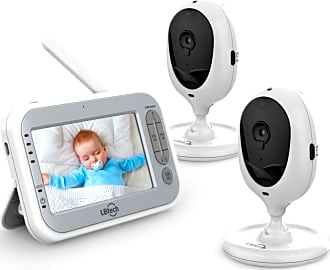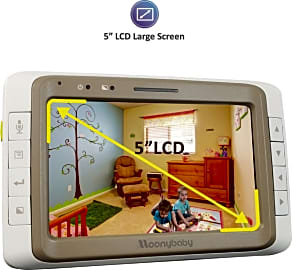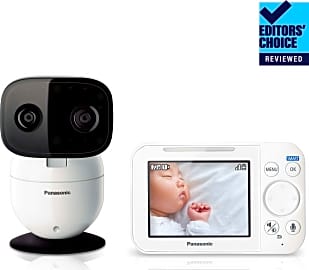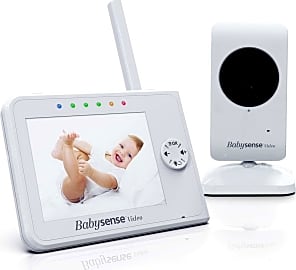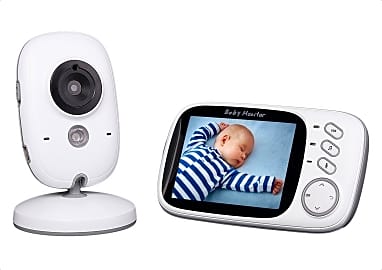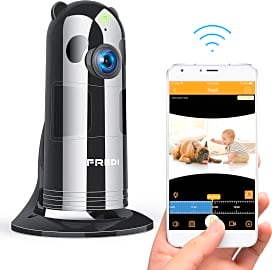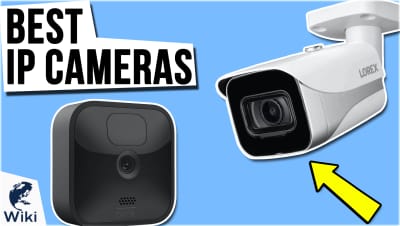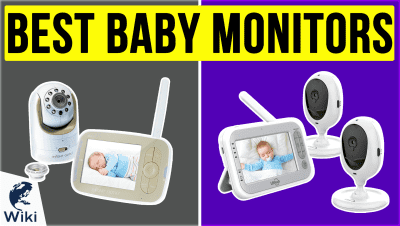The 10 Best Video Baby Monitors

This wiki has been updated 40 times since it was first published in March of 2015. For new parents, there’s nothing more important than keeping an infant safe, happy, and healthy, and thanks to modern technology, that’s a whole lot easier than it used to be. Using one of the video baby monitors we’ve selected, you can keep an eye (and an ear) on your little guy or gal at all times, and make use of features like night vision, two-way audio communication, and music playback. When users buy our independently chosen editorial picks, we may earn commissions to help fund the Wiki.
Editor's Notes
January 21, 2020:
The market has no shortage of fly-by-night manufacturers capitalizing on cheap labor to produce baby monitors that are mid-grade at best. Fortunately, this is a category with some name brand contenders, as well, and in revisiting this ranking, we sought out offerings from just such companies. That led us to include things like the Panasonic Long Range Remote. We also found a decent model by Motorola, but in the end its camera design left too much to be desired to make the cut.
Speaking of cuts, we sent a number of older models packing, including the Palermo Best HD Surveillance Camera, which had a very frustrating app, and the DBPower Digital, which appears to have been discontinued by its maker.
Ultimately, we ordered our ranking by things like transmission range, video quality, and special features, among which good lullabies and battery life were paramount. It was particularly important that we find models with good night vision provided by infrared LEDs, like the ones that are clearly visible on the Infant Optics DXR-8. This remains one of the top models in the industry for its performance when the lights are out, but it also boasts some of the most reliable hardware on the scene, and can easily double as a local security camera when your kids grow out of it.
Keep Your Signal To Yourself
These systems are made up of two simple components: the camera/transmitter and the receiver/display.
At any given moment, your baby monitor sends dozens of images of your child flying through the air in your home. If that monitor system uses a conventional radio frequency to transmit those signals – much the way cordless phones and Bluetooth devices operate – the odds of a signal being intercepted are higher than I'm sure you'd like.
These systems are made up of two simple components: the camera/transmitter and the receiver/display. Some of the cameras only pick up radiant light in the spectrum already visible to the human eye, perhaps with a little better light collection from the quality of the lens and sensor. Others can see into the infrared spectrum, so anything going on in the dark is fully visible.
In other words, the images floating in the ether from the crib to your kitchen are going to be clear and personal, the kind of material you want to keep to yourself.
Newer systems operate on your wireless network's frequency, which is similar in range to those frequencies more susceptible to tinkering and hackers. Your wireless network, though, can be password protected, adding an important layer of security to your monitoring.
Your Baby Is Ready For A Closeup
You're going to buy a baby monitor. You're probably going to buy it soon. After all, babies only stay babies for a limited amount of time. So, you need to know which of these monitor systems is right for you, and the sooner you know it the better.
This both cuts down on clutter around the house and removes a piece of tech from the equation whose usefulness will disappear as your babies age out of it.
Here are a few simple questions you can answer that will guide your selection process nicely:
Is it just the one baby we're talking about? If there's more than one kid in the picture, or you want to have another come along while the first is still swaddling, getting a system with a remote controlled camera will allow you to check in on each child without leaving the comfort of your favorite chair. Or, better yet, a system with a monitor that can connect to more than one camera will give you total angular control.
Do you want another screen in your home? If you're in the camp that is resistant to our ever-increasing reliance on screens, you might want a system that links to your smartphone instead of yet another monitor screen. This both cuts down on clutter around the house and removes a piece of tech from the equation whose usefulness will disappear as your babies age out of it.
Did They Even Have Babies Back Then?
The case of the Lindbergh baby is a gruesome one. In 1932, a child was abducted in New Jersey and held for ransom. The ransom was paid, but a little more than two months after the kidnapping, the body of the boy was found.
Which is to say that people just had to check in on their kids with their very own eyes and ears.
In addition to forcing the US Congress to act on making kidnapping a federal crime, the ensuing press coverage of the kidnapping and the subsequent trial and conviction of the case's primary suspect sent shock waves of fear through a nation of parents.
Before the 1930s, the only baby monitor in existence resided in the recesses of a parent's or servant's orbital bones, and in the fine hairs of their ear canals. Which is to say that people just had to check in on their kids with their very own eyes and ears.
A few years later, in 1937, the Zenith corporation introduced the first baby monitor to the marketplace, called the Radio Nurse. Interestingly, many of these early baby monitors had features that would disappear from the monitors of the 1960s, 70s, and 80s, only to be reintroduced to the market in recent models.
The basic premise remains, though the incorporation of video technology and camera control is new. Where the tech goes from here remains to be seen, but it might not be long before we get ourselves a nanny-bot of sorts, that can watch over, feed, and play with our kids for us. Let's just hope the AI doesn't get any bright ideas and go kidnapping the little monsters.


